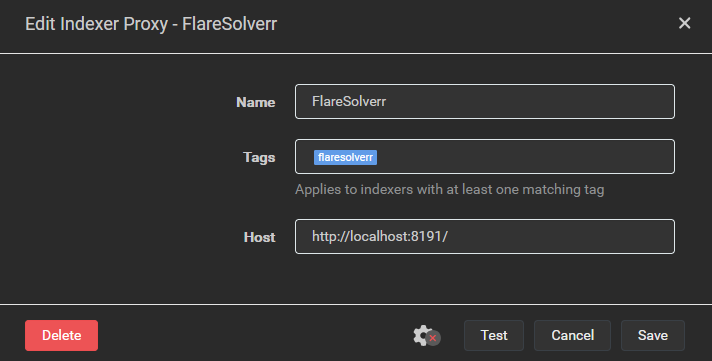

Yeah, I don’t get it either. What I’ve seen doesn’t look anywhere close to an 8+ out of ten rating. Will be interesting to see the player ratings on this one…


Yeah, I don’t get it either. What I’ve seen doesn’t look anywhere close to an 8+ out of ten rating. Will be interesting to see the player ratings on this one…


I don’t dislike that art style in general, but to my mind it seems like a poor fit for a Dragon Age game. I guess they’re pivotinf strongly away from the series dark and gritty roots, which is unfortunate because I think that was one of its strong points.


Watching Skill Up’s review now, and oof. That art style… that writing. Don’t know who they made this game for, but it’s definitely not me.
Is it exploitation? I’d argue slave or prison labor is exploitation because the workers have no freedom of choice. Bees are free to leave, and the queen will in fact do so if not content with the conditions in the hive. If the queen leaves, all of the bees will swarm with her and you’d be left with an empty box.
Beekeeping strikes me more as symbiosis. The beekeeper provides ideal conditions, far better than the average location that would be found in the wild, and can help protect the hive against threats like mites. In exchange the beekeeper receives a share of the honey produced by the hive.
No beekeeper takes all of the honey from the hive. Only the top box (the “honey super”) of a typical hive stack is harvested. A grate below the top box (a “queen excluder”) prevents the queen from entering it so no larva are laid in the top box. The workers bee are smaller and can pass through the grate to build out comb and produce honey. The comb and honey in the bottom boxes are left to the hive to feed its workers and produce the next generation of bees, ensuring the survival of the hive.
A queen excluder cannot be used to prevent swarming long-term as the drones that gather the pollen also won’t for through the grate! An excluder might be used to delay swarming and buy time so the beekeeper can offer another solution, like adding more boxes to the hive or splitting it into two hives. Better beekeepers proactively manage their hives, e.g. by setting up an empty hive in advance to essentially offer a swarming hive a new ideal home whenever they’re ready for it.


No, the opposite actually! Any amount of exercise will help with GI motility, but intense exercise causes the digestive system to slow down (source).


None of the above. The correct answer is walking. Moving around helps kickstart the GI tract.


Oh I’m streets ahead, I never took him at his word in the first place.


I don’t believe it actually does grow back faster, it just seems that way. The first inch or so gives the impression of growing back faster because the hairs are thicker at the base so they’re more visible and less prone to breakage.


I’m all for de-Googling, but… is it possible that Restricted in this context mean those apps have no data usage because they’re restricted from using it? It could be trying to say that the app is restricted, not that you’re restricted.


Is there any benefit at all
Maybe! There’s at least some scientific evidence that chemical compounds in mushrooms can have medicinal effects.
Bias disclaimer: I put a lion’s mane mushroom tincture in my morning tea because it may have a neuroprotective effect (source). My father’s father had dementia, my father is currently in a home with profound dementia, the chances it’s going to happen to me are very high. It’ll be years before I know whether lion’s mane mushroom will do anything for me (and even then you couldn’t claim anything from one data point), but I’m willing to try anything as long as it’s affordable and has at least some plausible evidence behind it. This isn’t the only thing I’m doing of course, I’ve also overhauled my diet (MIND diet) and lost 30 pounds (obesity is correlated with dementia).
why can’t you make it your self by pulverizing dried mushrooms of the same variety they use into powder and making the coffee yourself?
You absolutely could. Or, you know, just eat some of the same mushrooms. The benefit to dried products like Ryze, or tinctures like the one I use, are that they’re convenient, easily transportable and self-stable. I’ve cooked up fresh lion’s mane mushrooms several times, but not super often because they’re not in many stores in my area and tend to be pricey for the amount you get. I’ve also grown my own from a kit but that takes significant time and a little bit of daily attention to maintain optimal growing conditions. The tincture is convenient and relatively affordable as far as daily supplements go.


OpenAI on that enshittification speedrun any% no-glitch!
Honestly though, they’re skipping right past the “be good to users to get them to lock in” step. They can’t even use the platform capitalism playbook because it costs too much to run AI platforms. Shit is egregiously expensive and doesn’t deliver sufficient return to justify the cost. At this point I’m ~80% certain that AI is going to be a dead tech fad by the end of this decade because the economics just don’t work now that the free money era has ended.

If it was concrete in the floor I would guess rebar
Rebar is used in hollow block wall too:

I’d remove one of those circular knockouts at the back of the wall box to drill an inch to the left or right.


Tl;Dr the protocol requires there to be trusted token providers that issue the tokens. Who do you suppose are the trusted providers in the Google and Apple implementations? Google and Apple respectively, of course. Maybe eventually there would be some other large incumbents that these implementers choose to bless with token granting right. By its nature the protocol centralizes power on the web, which would disadvantage startups and smaller players.


Private State Tokens are Google’s implementation of the IETF Privacy Pass protocol. Apple has another implementation of the same protocol named Private Access Tokens. Mozilla has taken a negative position against this protocol in its current form, and its existing implementations in their current forms. See here for their blog post on the subject, and here for their more in-depth analysis.


One of my grandfathers used to work for Nortel. One of the projects he worked on was the Trans Canada Microwave, which was a microwave relay system built in the '50s to carry television and telephone signals across Canada. The towers were installed all over Canada in remote locations and high elevations. Maintenance on the system could be required even when the weather was bad. My grandfather told me that the engineers who worked on the towers would sometimes stick their hands in front of the microwave emitters to warm them up. It’s anecdotal, but I’m relatively confident that it’s theoretically possible to warm people with microwaves.
Big caveat, though. Those engineers knew how powerful the emitters were, they knew that microwaves are not ionizing radiation and thus posed no cancer risk, they knew roughly what percentage of their hands was composed of water, and thus how much heat energy their hands would absorb from the emitters at a given power level. That’s the only reason they were willing to do it, well that and they were probably the kind of people who got a kick out of doing something that would appear insane to most of the populace.
It seems very unlikely to me that a microwave system could be turned into a safe people-heating system for at least the following reasons:


I think you’re referring to FlareSolverr. If so, I’m not aware of a direct replacement.
Main issue is it’s heavy on resources (I have an rpi4b)
FlareSolverr does add some memory overhead, but otherwise it’s fairly lightweight. On my system FlareSolverr has been up for 8 days and is using ~300MB:
NAME CPU % MEM USAGE
flaresolverr 0.01% 310.3MiB
Note that any CPU usage introduced by FlareSolverr is unavoidable because that’s how CloudFlare protection works. CloudFlare creates a workload in the client browser that should be trivial if you’re making a single request, but brings your system to a crawl if you’re trying to send many requests, e.g. DDOSing or scraping. You need to execute that browser-based work somewhere to get past those CloudFlare checks.
If hosting the FlareSolverr container on your rpi4b would put it under memory or CPU pressure, you could run the docker container on a different system. When setting up Flaresolverr in Prowlarr you create an indexer proxy with a tag. Any indexer with that tag sends their requests through the proxy instead of sending them directly to the tracker site. When Flaresolverr is running in a local Docker container the address for the proxy is localhost, e.g.:

If you run Flaresolverr’s Docker container on another system that’s accessible to your rpi4b, you could create an indexer proxy whose Host is “http://<other_system_IP>:8191”. Keep security in mind when doing this, if you’ve got a VPN connection on your rpi4b with split tunneling enabled (i.e. connections to local network resources are allowed when the tunnel is up) then this setup would allow requests to these indexers to escape the VPN tunnel.
On a side note, I’d strongly recommend trying out a Docker-based setup. Aside from Flaresolverr, I ran my servarr setup without containers for years and that was fine, but moving over to Docker made the configuration a lot easier. Before Docker I had a complex set of firewall rules to allow traffic to my local network and my VPN server, but drop any other traffic that wasn’t using the VPN tunnel. All the firewall complexity has now been replaced with a gluetun container, which is much easier to manage and probably more secure. You don’t have to switch to Docker-based all in go, you can run hybrid if need be.
If you really don’t want to use Docker then you could attempt to install from source on the rpi4b. Be advised that you’re absolutely going offroad if you do this as it’s not officially supported by the FlareSolverr devs. It requires install an ARM-based Chromium browser, then setting some environment variables so that FlareSolverr uses that browser instead of trying to download its own. Exact steps are documented in this GitHub comment. I haven’t tested these steps, so YMMV. Honestly, I think this is a bad idea because the full browser will almost certainly require more memory. The browser included in the FlareSolverr container is stripped down to the bare minimum required to pass the CloudFlare checks.
If you’re just strongly opposed to Docker for whatever reason then I think your best bet would be to combine the two approaches above. Host the FlareSolverr proxy on an x86-based system so you can install from source using the officially supported steps.


That’s the event that gave me the push I needed to request deletion of my account with them. I won’t give them another dollar for as long as I live.


My dream was to work as a game developer. This was nearly 20 years ago. I actually got an offer in that field at one point, and the salary was like $20k less than what I was already being paid. I was the main bread-winner in what was a (mostly) single-income household at that time, with my partner pursuing her PhD. Gave up the dream, and I’m glad I did based on what I later learned about that industry. If I went into the game industry I’d be making far less money and have far less free time to do the things I enjoy, like playing the games other people make.
Memes aside, I’m eager to see some independent benchmarks. Been a while since I did a hardware refresh and I got the itch.